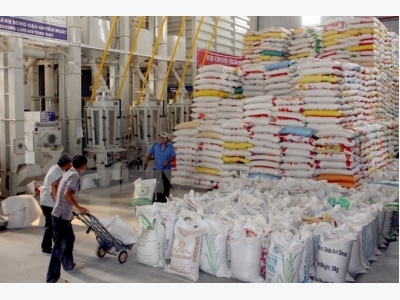Vietnam looks to put rice on Europes plate

Up to 100,000 tonnes of Vietnamese rice will be shipped to the EU each year tax-free in 2018 following the Vietnam-EU Free Trade Agreement, helping local rice exporters penetrate the market.
However, it remains to be seen if Vietnamese businesses can take advantage of this opportunity as the EU has strict technical barriers which most may struggle to satisfy, according to Lam Tuan Anh, Director of Thinh Phat Ltd., Co.
Only firms which have their own material areas and can control rice quality from cultivation to processing can access the market, Tuan Anh said, explaining that rice is a sensitive staple that is not included in many other free trade agreements.
Despite being the world’s third largest rice exporter, Vietnam is still in the early stages of building an image in the EU.
Experts said the EU is a promising market because of local consumers’ high living standards.
Although only a few rice exporting countries compete in the market such as Myanmar, Cambodia and Thailand, they all have good quality rice, experts said, urging Vietnam to create a brand name for its rice.
Vietnam’s Commercial Affairs Office in Sweden, Norway, Denmark, Finland, Iceland and Latvia, suggested Vietnamese businesses pay more heed to food safety to deliver their rice to Sweden and other Northern European countries.
Vietnam’s rice exports to the region have remained limited in turnover and varieties, according to the office.
Although demand for rice in Northern Europe is not huge, the region could be a promising market for Vietnamese rice if the country receives trade incentives and satisfys locals’ taste, a representative from the office said.
Vietnam has a huge opportunity to export farm produce like rice, vegetable, fruit and honey to the EU.
The Netherlands, Vietnam’s third largest rice importer in the EU, just behind Germany and the UK, is expected to serve as a gateway helping Vietnamese products go in other EU countries.
Many experts said that the Vietnamese Government should look to policy support and trade promotion to boost rice exports to the EU and Northern Europe in particular.
Vietnam exported 1.1 million tonnes of rice in the first quarter of this year, down 23 percent in volume and 18 percent in value compared to the same period last year.
China remained the largest rice importer in the period at 448,000 tonnes, 41 percent of total rice exports, followed by the Philippines and Africa with 20 percent and 13 percent, respectively.
Related news
 Vietnam vows to reorganize coffee production
Vietnam vows to reorganize coffee production With export volume of 1.8 million tons and export turnover of $3.35 billion, coffee was the biggest farm export item in 2016.
 Đà Lạt farmer quit job to grow organic vegetables
Đà Lạt farmer quit job to grow organic vegetables With only basic knowledge of gardening, the master-degree holder put all of his efforts into learning how to grow organic vegetables.
 Southern provinces face farm labour shortage
Southern provinces face farm labour shortage The south’s key economic provinces, such as Dong Nai, Ba Ria-Vung Tau and Binh Duong, have recently shifted focus from agricultural to non-agricultural sectors